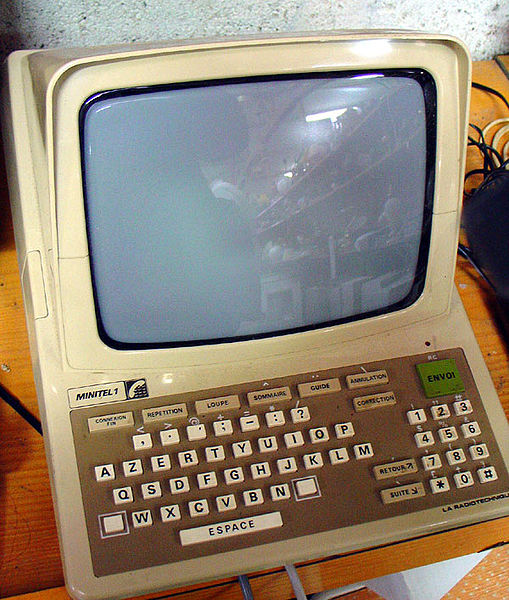This weekend, France will close Minitel, a service that has allowed people to access information on computers at home since long before the World Wide Web.
The service was the most successful example of videotex, which uses dial-up modems to send information to and from a monitor or television screen. Minitel was launched in 1982 by the government controlled agencies that provided telephone and postal services.
The most basic function of the system was to replace printed telephone directories with an online, searchable directory. The business model worked by the government giving away terminals (which combined monitor and keyboard in one unit) but charging a per-minute fee for accessing any information other than the phone directory.
This other information came from third-party providers who were quickly attracted by the large audience, which at one stage was made up of almost half the population. Companies providing “premium” information services (which included text based adult chat) could make cash by taking a commission from an increased access fee. It was also possible to sell goods and services through Minitel, with users able to link a credit card to their account.
Most of the types of information and communication that can be found on the web today featured on Minitel in one form or another, though pages were only available as monochrome text, meaning the market for Flashturbatory developers simply didn’t exist.
The BBC notes that French officials found a creative way to attract newspaper groups to providing services, despite their initial fears that Minitel would be a competitor. The government simply made a rule that only newspaper owners could offer Minitel services. Once the existing newspapers had taken advantages of this monopoly and begun offering enough services to make Minitel worthwhile for customers, the government simply relaxed the rules so that new providers could register themselves as starting a newspaper, but never actually need to print anything.
Perhaps predictably usage dropped once accessing the Internet on a PC became more widespread, particularly when per-minute access fees and then later phone call charges were replaced by monthly subscriptions, leaving the Minitel service appearing grossly overpriced.
Amazingly an estimated 600,000 Minitel terminals are still being used. It seems to be most common in rural areas where farmers use it for contacting officials and agricultural service providers. One farmer told the New York Times that the Minitel, while hardly a design classic, was sturdy enough to survive in an animal barn unlike modern devices.
(Image credit: Wikipedia user Tieum under Creative Commons license)

